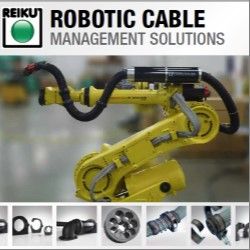Magnetic Sensors Find Attractive Opportunities in Green Energy
In the industrial market, a main growth driver for magnetic sensors is renewable energy, such as solar installations, and to a smaller extent, wind turbines," said Richard Dixon, Ph.D., principal analyst for MEMS and sensors at IHS.
El Segundo, Calif. (Sept. 26, 2012)-The market for semiconductor magnetic sensors used in industrial and medical applications expanded by 6 percent last year, with green energy initiatives acting as a major growth driver, according to an IHS iSuppli Magnetic Sensor Market Tracker Report from information and analytics provider IHS (NYSE: IHS).
Revenue in 2011 for industrial and medical magnetic sensors amounted to $118.2 million, up from $111.9 million in 2010. Although revenue in this segment is small compared to other magnetic sensor areas like automotive and wireless-consumer, the industrial and medical categories will fuel continued expansion for the sensors in the years to come. By 2016, revenue for this particular magnetic sensor segment is forecast to climb to $175.5 million, as shown in the figure attached, equivalent to a five-year compound annual growth rate of 8 percent.
"In the industrial market, a main growth driver for magnetic sensors is renewable energy, such as solar installations, and to a smaller extent, wind turbines," said Richard Dixon, Ph.D., principal analyst for MEMS and sensors at IHS. "Meanwhile, motors of all kinds consume an estimated 45 percent of all electricity generated worldwide, and huge energy savings are possible by improving their efficiency. And as government legislation comes into play, this is acting as a boon for the sensors, implemented with an eye toward reducing energy consumption."
Magnetic Sensors Get Pulled into Industrial Applications
The semiconductor magnetic sensor market consists of Hall-effect and magneto-resistive semiconductor integrated circuits (ICs) that are used to track rotational speed and linear angles in machines and devices, or to detect and process magnetic fields to establish positioning. For the industrial and medical applications in particular, the sensors are utilized in motors in order to improve their energy efficiency. Sensors also are present in a range of medical devices in which some form of motor control is involved, such as pumps.
The bulk of revenue last year, at 70 percent, was from industrial applications, with medical uses accounting for the remaining 30 percent.
Examples of motors in which magnetic sensors are used include low-voltage AC and DC motors, three-phase inductive motors, stepper- and servo-type motors, single-phase motors and compact motor drives.
Elsewhere for industrial uses, magnetic sensors are implemented in the uninterruptible power supplies (UPS) for machines like computer servers, welding systems, robotics, train transport infrastructure, off-road vehicles and forklift trucks.
The most prevalent types of magnetic sensors being used for industrial applications are electric current sensors, including shunt resistors, Hall-effect integrated circuits, current-sensing transformers, open- and closed-loop Hall devices, and fluxgate transducers. In many applications measuring lower currents at less than 50 amperes, such as residential solar inverter applications or smaller UPS settings, simple resistive bars or shunts are used.
But as the size of the current to be measured increases, shunts become bulky and expensive. In higher- current applications like large inverter motors, open- and closed-loop Hall sensors deploy Hall-effect ICs in a small package with an amplifier; more integrated versions with an application-specific integrated circuit inside the package are also possible. Hall ICs likewise are designed into industrial washing machine inverter-control applications.
Outside of electric current sensors, smaller magnetic sensor markets exist for either standalone Hall effect ICs or magnetoresistive sensor switches, which are used for motor commutation to reduce ripple and improve performance, or for position measurement.
Magnetic Sensors are Vital in Medical Applications
Magnetic sensor use in medical applications, although much smaller than in the industrial sectors, can be life-saving or life-enhancing. Usage can found mostly in medical devices using commutation sensors for motor control, in applications such as ventilator machines; infusion, insulin and syringe pumps; or kidney dialysis machines.
Another example of medical use for the sensors is in simple centrifuges for preparing samples. The sensors contribute to smooth control of small motors, making them quieter and more reliable.
Switches are similarly a salient application, finding their way into medication-dispensing cabinets that can be operated remotely, or in bed-positioning and hearing aids. For hearing aids, giant magnetoresistive sensor ICs (GMR) compete with Hall and Reed switches.
Who Makes Them?
Key semiconductor suppliers of Hall-effect ICs include Asahi Kasei Microsystems of Japan, U.S.-based Allegro MicroSystems (part of Sanken), Melexis NV of Belgium, Micronas of Switzerland, and LEM. These companies typically provide standalone ICs in plastic packages for commutation and position switches and for electric current-sensing.
Hall-Effect elements with amplifiers or Hall ICs are also a part of open-loop or closed-loop current sensors manufactured by the likes of LEM, ABB of Sweden, Telco of the United Kingdom, and Japanese companies Tamura and Kohshin. In this supplier group, German-based Vacuumschmeize is a major supplier of non-Hall current sensing, using a magnetic inductive approach.
About IHS (www.ihs.com)
IHS (NYSE: IHS) is the leading source of information and insight in critical areas that shape today's business landscape, including energy and power; design and supply chain; defense, risk and security; environmental, health and safety (EHS) and sustainability; country and industry forecasting; and commodities, pricing and cost. Businesses and governments around the globe rely on the comprehensive content, expert independent analysis and flexible delivery methods of IHS to make high-impact decisions and develop strategies with speed and confidence. IHS has been in business since 1959 and became a publicly traded company on the New York Stock Exchange in 2005. Headquartered in Englewood, Colorado, USA, IHS employs more than 6,000 people in more than 30 countries around the world.
Featured Product

